TESOL 2016: Convention in Photos
The TESOL 2016 International Convention & English Language Expo in Baltimore, Maryland, USA drew more than 6,400 professionals devoted to advancing their English language teaching knowledge and committed to their professional development.
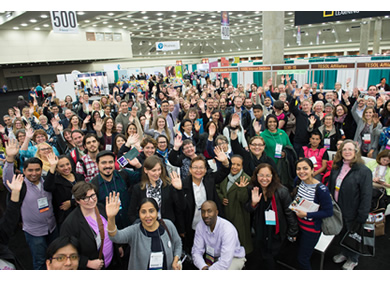
Attendees traveled from around the world to celebrate TESOL's 50th Anniversary with fellow TESOLers.
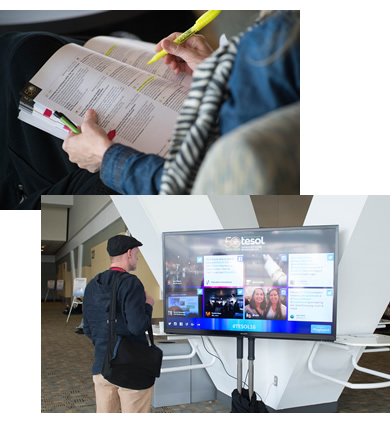
There were plenty of ways for attendees to find the sessions right for them, and to see what was going on at the convention.
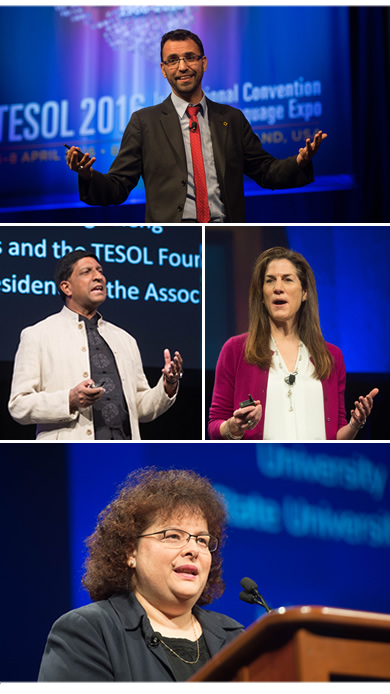
Keynotes drew the largest crowds, with speakers discussing topics like revolutionizing education, research on promoting effective language learning, and determining acceptable language use. (Clockwise from top: Aziz Abu Sarah, Anne Curzan, Jeanette Altarriba, Andy Curtis)
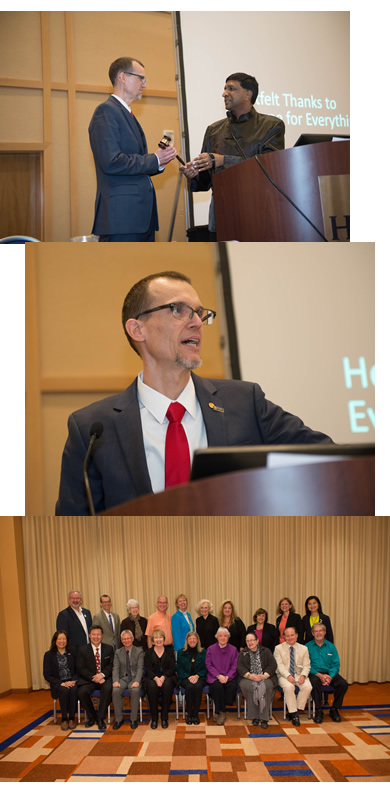
2015–2016 TESOL President Andy Curtis handed over the ceremonial gavel to 2016–2017 President Dudley Reynolds, and past presidents in attendance posed for a snapshot.
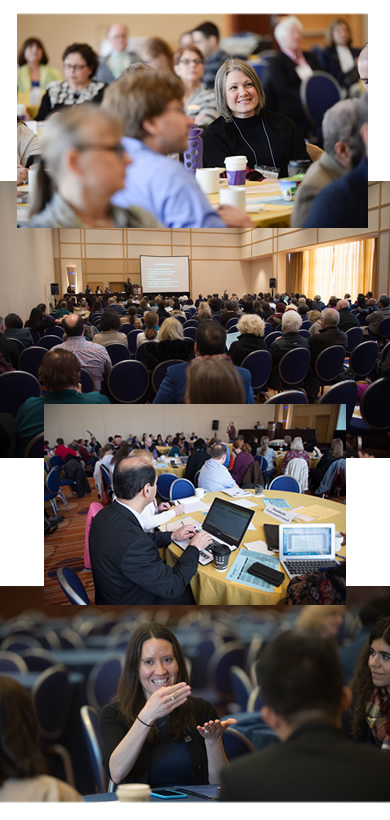
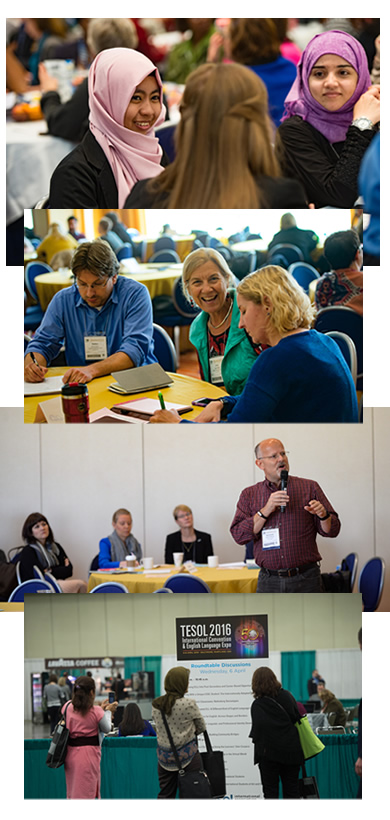
There were approximately 1,000 sessions offered in Baltimore, ranging from language testing and assessment to technology in language learning, bilingual education, and public policy.

The Electronic Village offered both quick and in-depth sessions on educational technology.
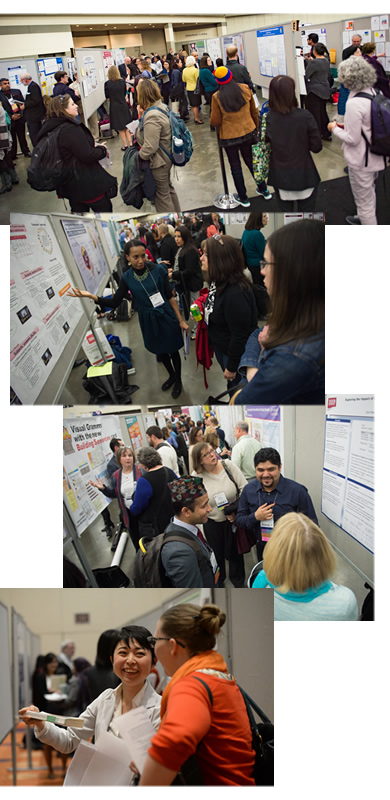
Posters provided attendees with casual, face-to-face interactions with presenters.
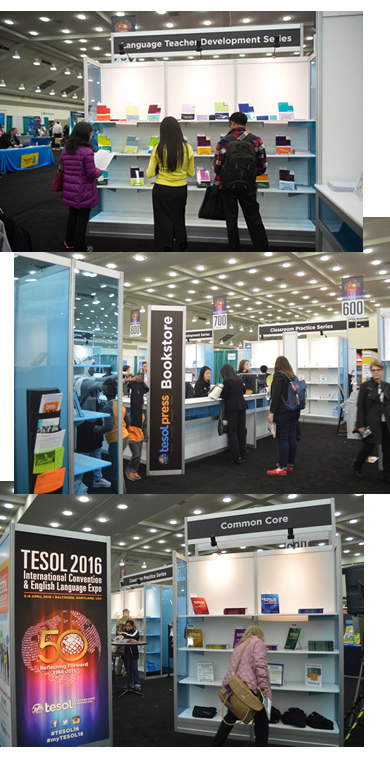
In the Exhibit Hall, the TESOL Bookstore offered special deals and convention pricing for attendees.
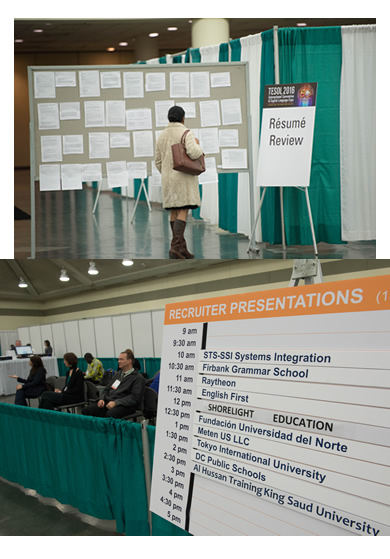
Job MarketPlace attracted 38 recruiting companies and more than 350 job seekers.
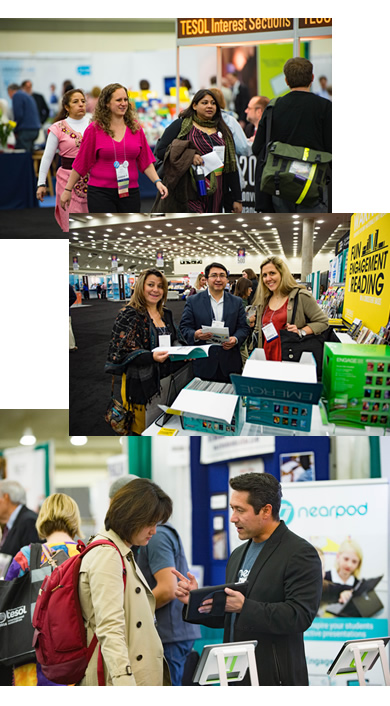
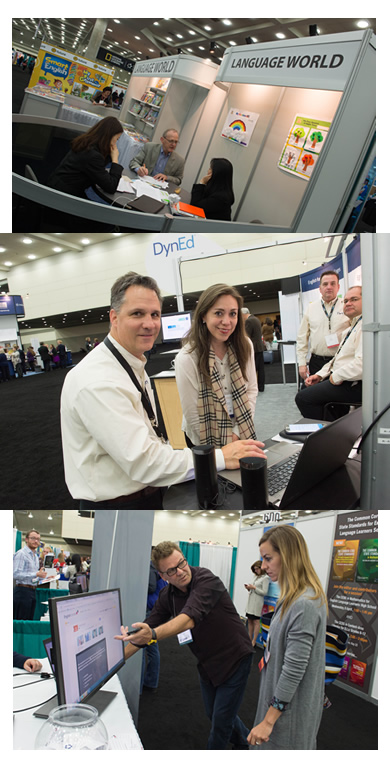
122 exhibitors offered cutting-edge classroom tools, resources, and publications.
And TESOLers connected with each other from all over the world!
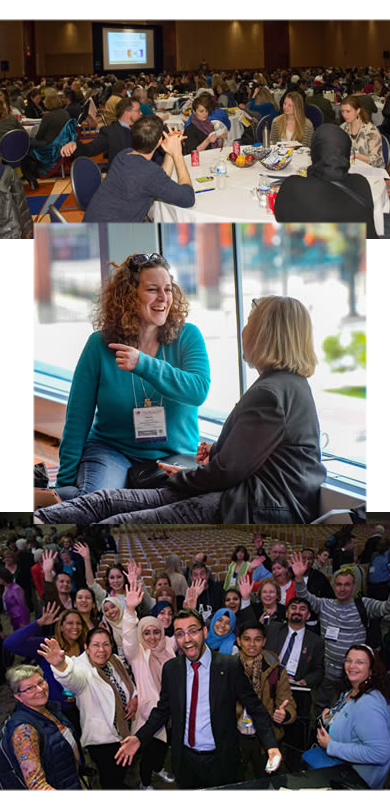
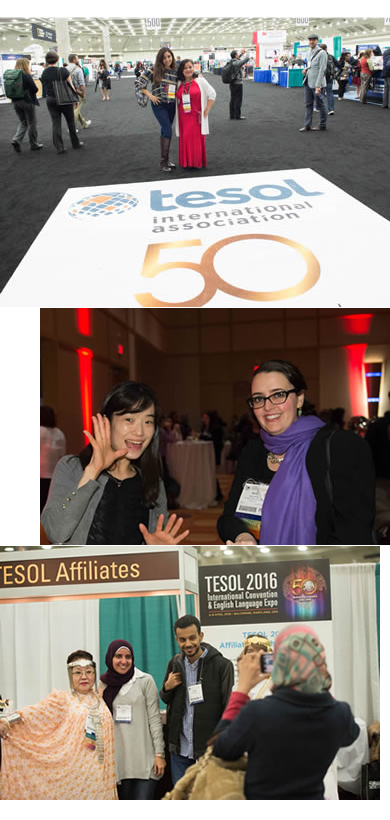
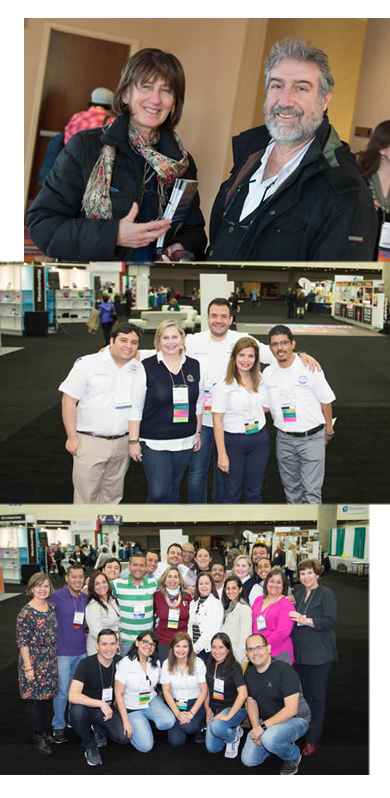
TESOL Blogs
Interested in writing a blog for TESOL?
Read the submission guidelines and send us your post!
Check out the latest TESOL Blogs:
|
Authentic Text Time in Adult Ed, by Robert Sheppard
 Adult learners, especially immigrants who have various competing priorities which may take precedence over English, need to see an immediate application for their new language. In many contexts, English can be a luxury; for adult immigrants, it cannot be. As teachers, we must approach it with an urgency and immediacy that might be unusual in, say, a business EFL program. A student-driven environmental/authentic text time is one way to add relevance, immediacy, and authenticity to your adult English classes. Read More. Adult learners, especially immigrants who have various competing priorities which may take precedence over English, need to see an immediate application for their new language. In many contexts, English can be a luxury; for adult immigrants, it cannot be. As teachers, we must approach it with an urgency and immediacy that might be unusual in, say, a business EFL program. A student-driven environmental/authentic text time is one way to add relevance, immediacy, and authenticity to your adult English classes. Read More.
|
|
6 Steps to Making New Words Go From Unknown to Acquired, by Nathan Hall
 Years ago, I began Chinese lessons to better understand what it’s like to learn a language. I went from feeling giddy when I recognized a few characters to frustrated at how many I didn’t understand in the time it took to look at the bigger piece. Years later, I can identity many more common characters, but every time I start a new lesson repeat the cycle of going from overconfident to overwhelmed when I see how many new words I have to learn. Years ago, I began Chinese lessons to better understand what it’s like to learn a language. I went from feeling giddy when I recognized a few characters to frustrated at how many I didn’t understand in the time it took to look at the bigger piece. Years later, I can identity many more common characters, but every time I start a new lesson repeat the cycle of going from overconfident to overwhelmed when I see how many new words I have to learn.
That experience made me think about how my students feel when I start previewing vocabulary for a new lesson. The first vocabulary preview can seem intimidating and strange when you don’t recognize anything in the list. Lessons can reinforce what the students learn, but there is a big difference between knowing a word well enough to answer a multiple-choice question and actually adding it into the students’ language repertoire. The result is that students tend to “learn” the word for a short while without “acquiring” it into their developing language. Read More. |
|
Game-Based Learning and Pre-K–5 English Learners, by Judie Haynes
 In my previous blogs, I talked about using websites and apps to help elementary-age ELs improve literacy skills. In this blog, I would like to mention some games that support STEM learning for ELs through game-based learning (GBL). GBL is game play that has prescribed learning goals. Activities are designed to balance subject-area learning with games. I think that game-based learning could help ELs learn language and content-area information because it keeps them involved in the learning. GBL can provide students with a context for communicating with their classmates and developing social skills. In my previous blogs, I talked about using websites and apps to help elementary-age ELs improve literacy skills. In this blog, I would like to mention some games that support STEM learning for ELs through game-based learning (GBL). GBL is game play that has prescribed learning goals. Activities are designed to balance subject-area learning with games. I think that game-based learning could help ELs learn language and content-area information because it keeps them involved in the learning. GBL can provide students with a context for communicating with their classmates and developing social skills.
Although GBL is usually associated with middle or high school students, there are many ways it can be used with pre-K–5 students. First, it is important to read some introductory reading to familiarize yourself with basic GBL concepts. Here are a few articles that I recommend: Read More. |
|
9 Strategies for 21st-Century ELT Professionals, by Yilin Sun
 Recently, I gave a keynote talk at the Thai-TESOL 36th Annual Conference (January 2016). It was a well attended conference as Thai-TESOL leaders always do a fantastic job in organizing their annual event. The theme was “Empowerment Through Glocalization,” with the objective focused on how to empower ELT professionals in the changing landscape of ELT. After some contemplation, I came up with nine strategies as number nine is a lucky number in Thai culture. I encourage you to share your thoughts after reading this blog. Recently, I gave a keynote talk at the Thai-TESOL 36th Annual Conference (January 2016). It was a well attended conference as Thai-TESOL leaders always do a fantastic job in organizing their annual event. The theme was “Empowerment Through Glocalization,” with the objective focused on how to empower ELT professionals in the changing landscape of ELT. After some contemplation, I came up with nine strategies as number nine is a lucky number in Thai culture. I encourage you to share your thoughts after reading this blog.
Strategy 1: Value the Changing Perspectives on ELT
About 50 years ago, the ELT field started to see changes in our views of English language learning; this has become more evident over the last 20 years. The old term of ESL has been changed to ELL or EAL (English as an additional language) as ELT educators recognize that many learners know more than two languages and English is not their second language anymore. Read More. |